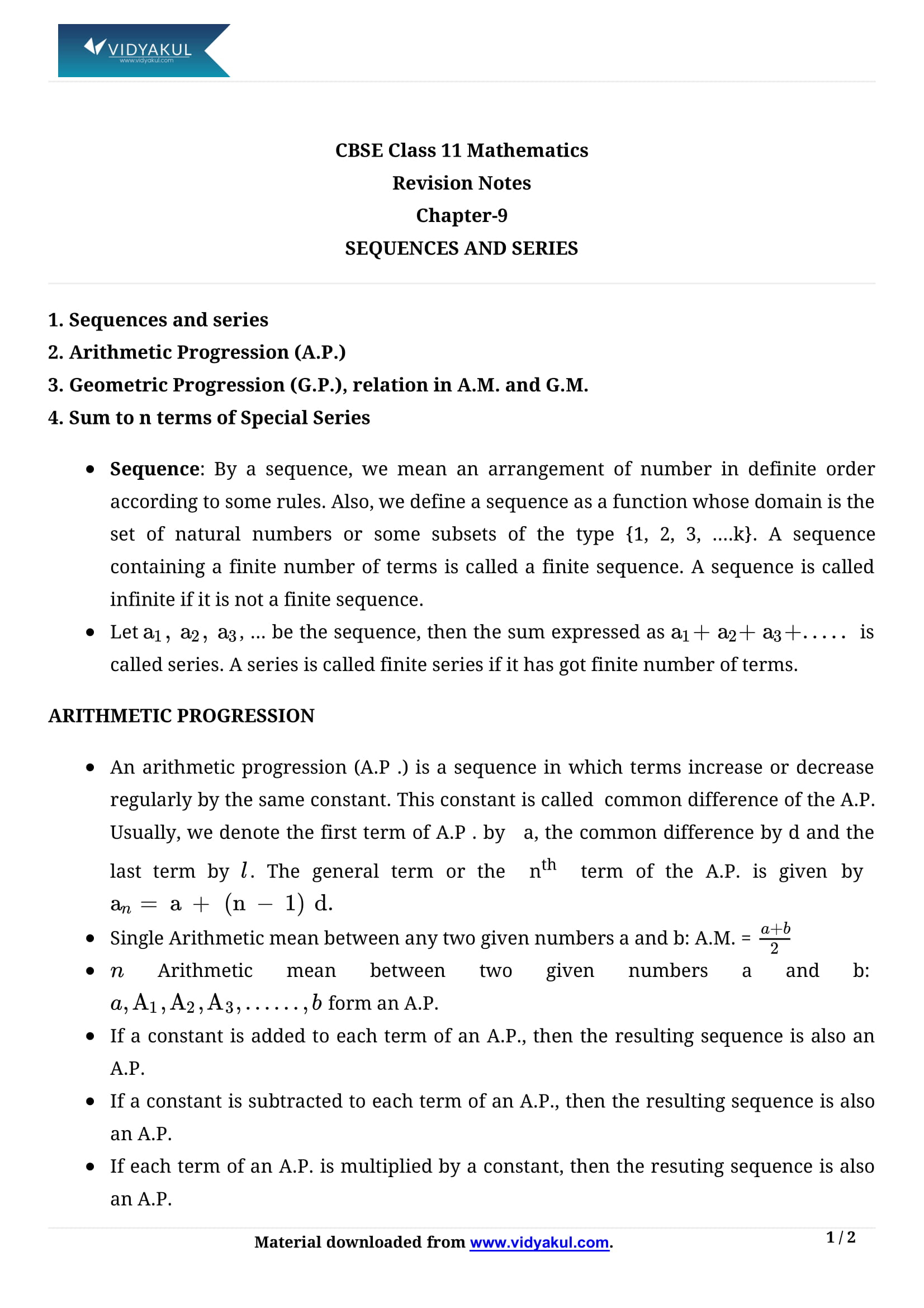Sequences and Series Class 11 Formulas & Notes

Chapter 9 Sequences and Series
Chapter 9 is about sequences and series. It is essential that students study the chapter thoroughly before answering the practice questions. Students should focus on understanding the various concepts related to the chapter so that they can understand the correct approach to answering the questions. The Grade 11 Math notes Kit, Chapter 9 introduces a variety of questions and answers that will greatly improve students' readiness.
Students can greatly improve their preparation by downloading and referencing these study materials in PDF format. All of these learning resources are available free of charge and are available through this page.
MATHEMATICS NOTES CHAPTER-9
Points to Remember
We all are aware of the definition of sequence, Series and Progressions.
The sequence is a function whose domain is the set N of natural numbers.
Real Sequence: A sequence whose range is a subset of R is called a real sequence.
Series : If a1, a2, a3, a4, ………, an, ………. is a sequence, then the expression a1 + a2 + a3 + a4 + a5 + …….. + ……… + an + ……… is a series.
A series if finite or infinite according to as the number of terms in the corresponding sequence are finite or infinite.
Progressions: It is not necessary that the terms of a sequence always follow a certain pattern or they are described by some explicit formula for the nth term. Those sequences whose terms follow certain patterns are called progressions.
Difference Between Sequences and Series
Let us find out how a sequence can be differentiated with series.
Topics and Sub-topics
The topics and sub-topics of NCERT Class 11 Maths Chapter 9 Sequences And Series are as under:
The sequence is a function whose domain is the set N of natural numbers.
Real Sequence: A sequence whose range is a subset of R is called a real sequence.
Series : If a1, a2, a3, a4, ………, an, ………. is a sequence, then the expression a1 + a2 + a3 + a4 + a5 + …….. + ……… + an + ……… is a series.
A series if finite or infinite according to as the number of terms in the corresponding sequence are finite or infinite.
Progressions: It is not necessary that the terms of a sequence always follow a certain pattern or they are described by some explicit formula for the nth term. Those sequences whose terms follow certain patterns are called progressions.
Learn more about the same in Sequences and Series Class 11 Formulas & Notes pdf.
Download this solution for FREE Download this PDF
Download Vidyakul App for more videos, PDF's and Free video lectures.





